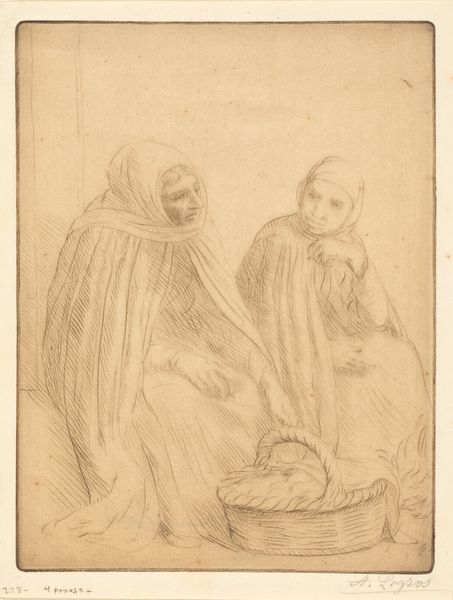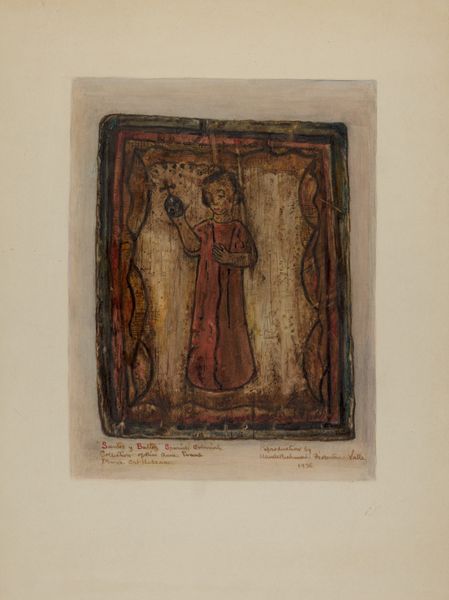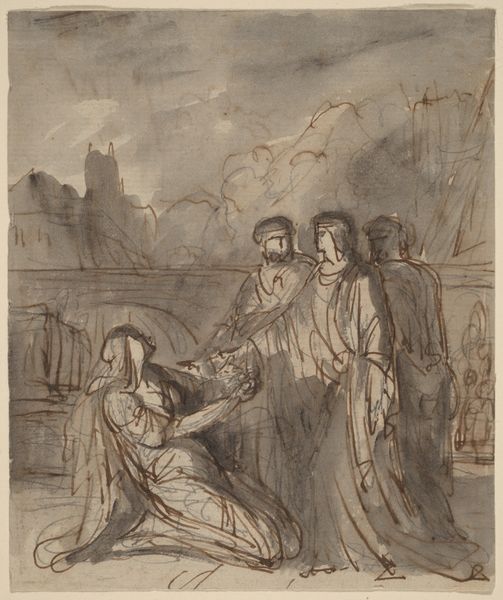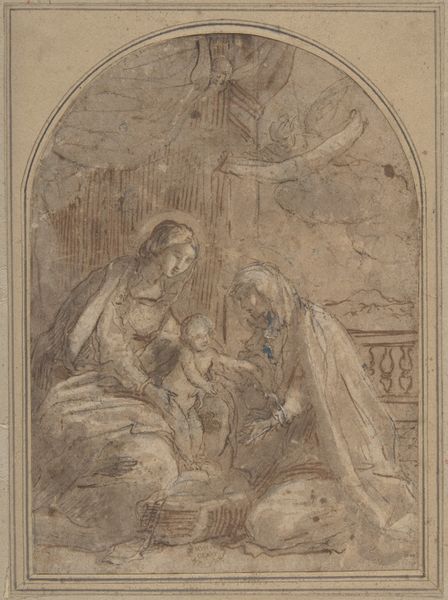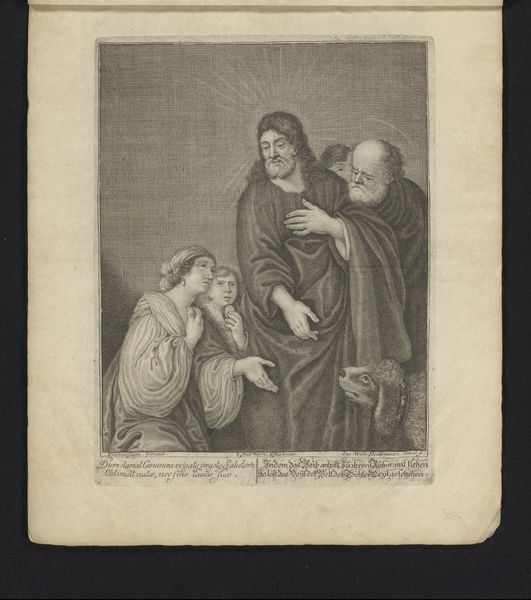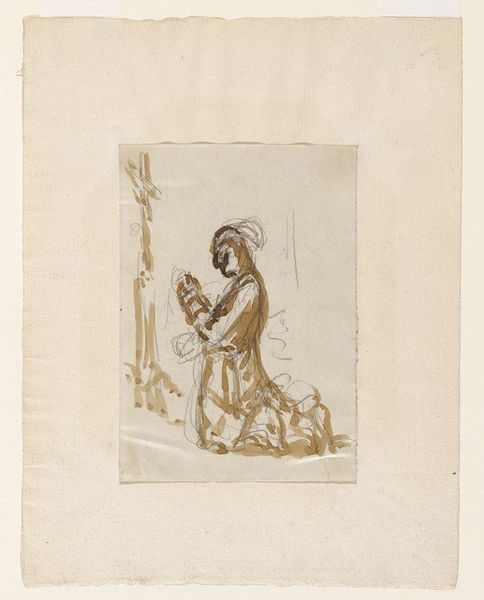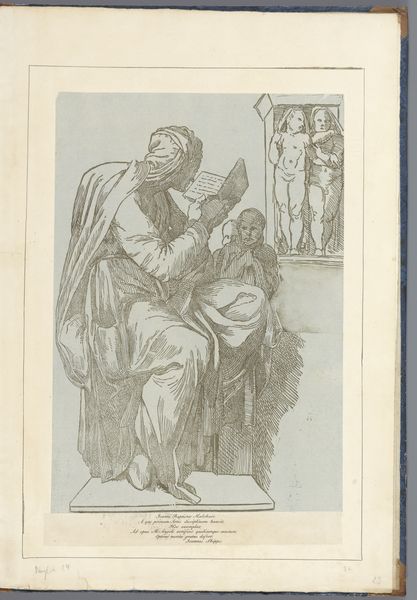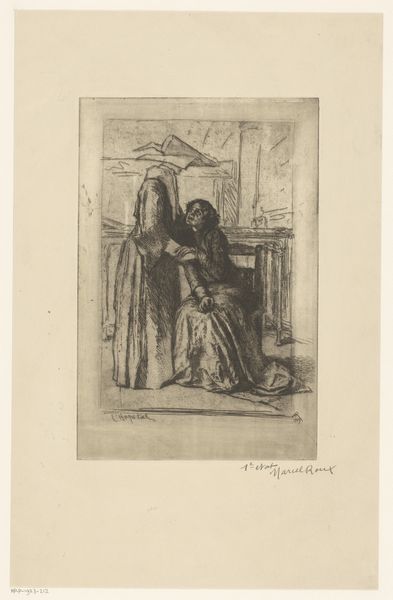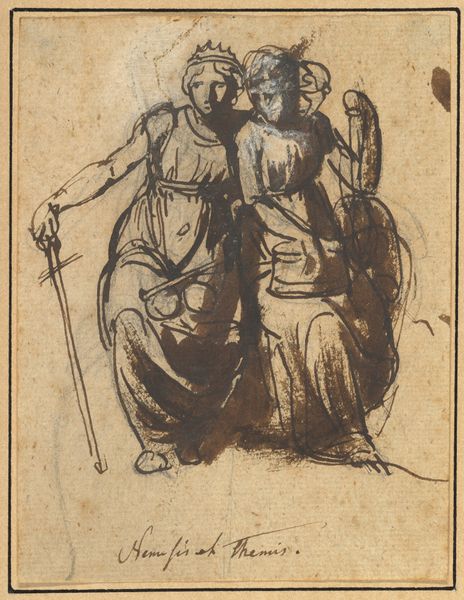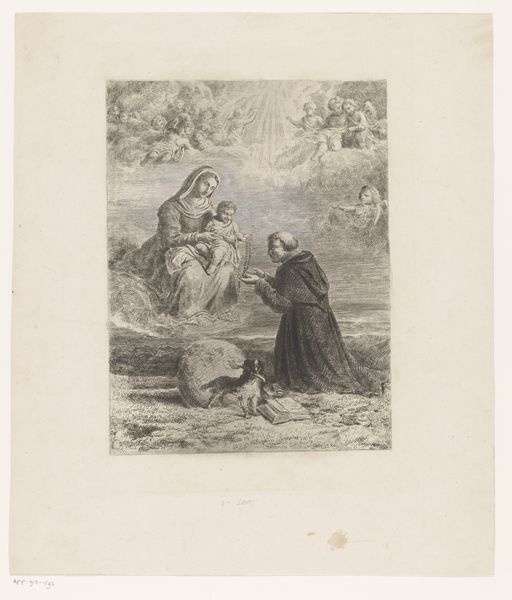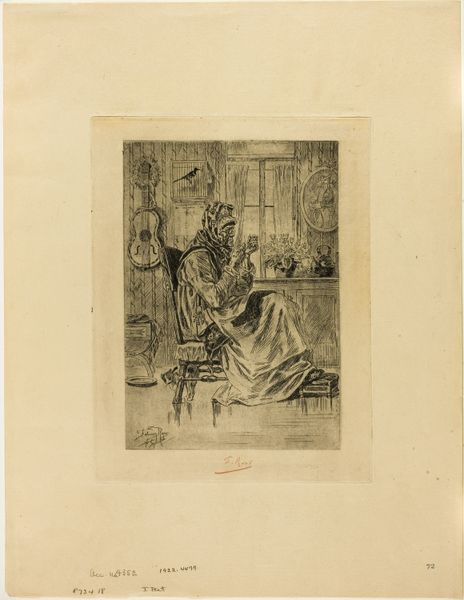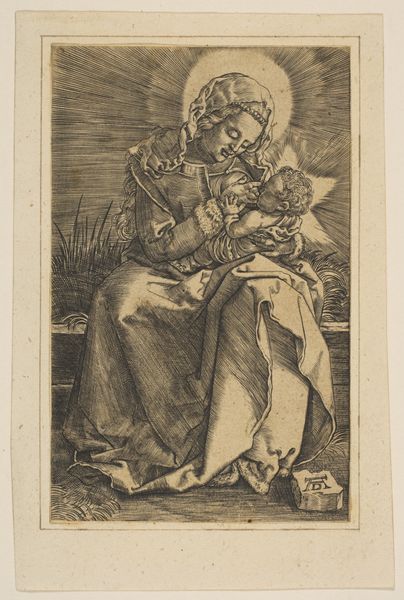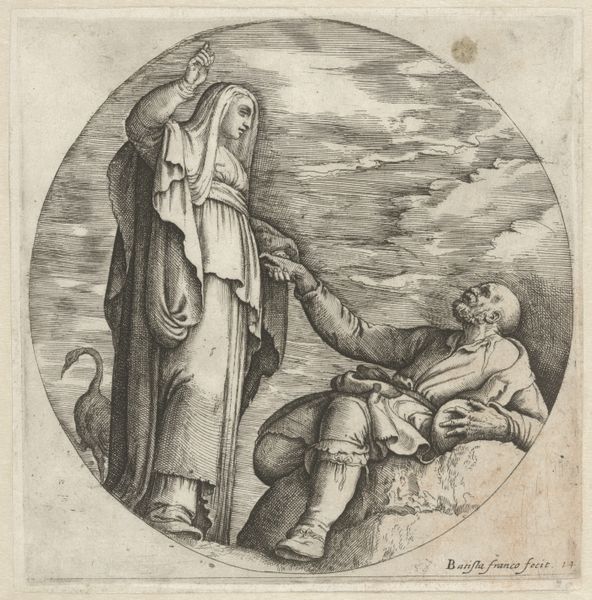
drawing, paper, ink
#
portrait
#
drawing
#
figuration
#
paper
#
11_renaissance
#
ink
Dimensions: 210 mm (height) x 152 mm (width) (bladmaal)
Editor: Here we have "Two standing Roman matrons, one with a shield," a 16th-century drawing rendered in ink on paper. The figures appear shrouded and strong at the same time. What jumps out at you when you look at this drawing? Curator: What I see here are the material traces of labor and access. Consider the paper itself, its source. How available and costly was it? Who would have had the time and resources to create this? Then, look at the ink, and how it's applied. Editor: What do you mean? Curator: Note how the ink defines not just the figures, but also the light, shadow and volume through hatching and layering. This isn't just about representation; it’s a physical record of the artist's gestures, the building up of the image through repeated, skilled applications of material. It shows the time dedicated to creation, suggesting this artwork was made within a particular socioeconomic framework that permitted, and maybe even encouraged, the artist to develop and practice these particular techniques. Also note the contrast between the detail of the faces versus the simplification of the drapery: perhaps a choice motivated by the available material or a more strategic investment of labor? Editor: So you are saying we need to think beyond what’s depicted and more about how it was made? Curator: Exactly. The materials and techniques used tell us so much about the cultural and economic circumstances of its creation. The consumption of materials is part of the message. How this was circulated after the piece was produced also determines the message. It makes you wonder where this drawing may have been seen or distributed? Editor: That really changes my understanding of what I’m seeing here. Thanks for pointing out the relationship between materials and historical context! Curator: Indeed. It allows us to appreciate the work beyond just its aesthetic qualities.
Comments
No comments
Be the first to comment and join the conversation on the ultimate creative platform.
